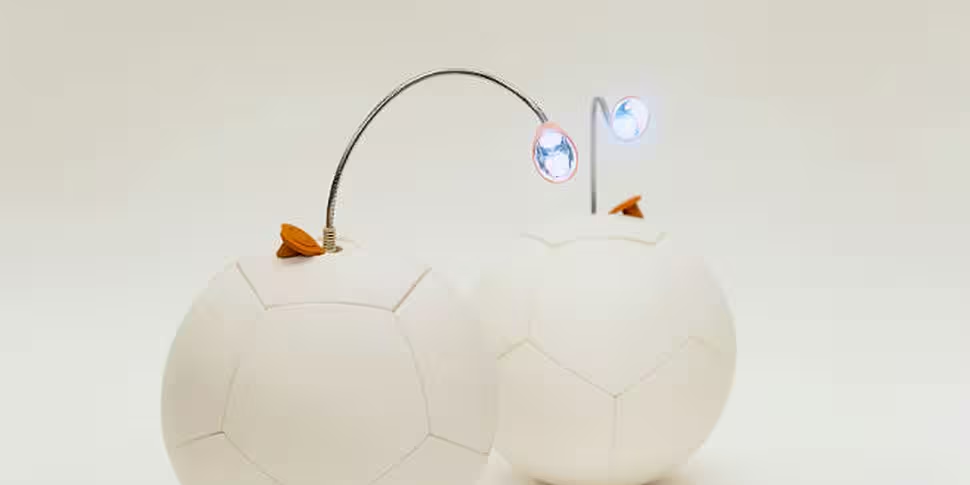Newstalk Magazine is available now for free from the Apple app store.
While discussing multi-billion dollar plans to plug Africa "into the grid of the global economy” he took a few moments to examine - and play with - a more modest electricity provider: Soccket.

Image credit: Soccket/Facebook
The brainchild of two Harvard undergraduates, the Soccket is a football with lofty ambitions. By utilising the global obsession with soccer, and the most basic energy production technologies, the Soccket aims to help alleviate one of the developing world’s most serious problems – the critical lack of electricity for billions of people.
"The Soccket turns one of the most popular games in Africa into a source of electricity and progress. You can imagine this in villages all across the continent," Obama said.
Its creators hope it can provide free, clean electricity to, potentially, billions of people living off the electrical grid in developing countries.

Image credit: UN Photo/Fred Noy
Jessica Matthews and Julia Silverman weren't even studying engineering when they started on the Soccket project. Their original prototype was a hamster ball with a torch inside that charged when shaken. They kicked the ball around campus and as it moved the torch lit. The potential was in the simplicity.’
According to Uncharted Play, the New York based for-profit social enterprise founded by Matthews and Silverman, the Soccket works on a basic principle: “The pendulum-like mechanism inside the Soccket captures the kinetic energy generated during normal play, and stores it in the ball for later use as an off-grid power source. Just 30 minutes of play can power a simple LED lamp for 3 hours.”
The fourth, and latest, iteration of the Soccket is a vinyl coated ball with two layers of dense foam – to both protect the technology and ensure the ball can’t puncture and deflate – surrounding the crucial pendulum and lithium ion battery system. A small plastic cap on the ball conceals a small connector, much like a headphone port on an iPhone. The LED lamp provided with the ball, and the applicable phone charger, connect directly into this outlet.
In total the Soccket weighs just 50 grams more than a standard football.
The maximum charge of the Soccket is 72 hours of LED light – although that requires the marathon effort of kicking the ball around for 16 hours. It won’t power a TV or street lights, but it will make it possible for families to cook, businesses to operate and children to study at night, while also ensuring an available charge for mobile phones at all times and in all locations.

The current solution to a lack of electrical light is often the use of kerosene lamps, an unavoidable practice that has serious health dangers for users, while also causing serious harm to the environment.
Toxic kerosene fumes can also cause a range of illnesses, such as tuberculosis, cataracts and cancer. The United Nations Environmental Programme reports that more women in rural Kenya – a country where roughly 75% of people use kerosene lamps - die of smoke related illness than of malaria and tuberculosis.
Aside from lighting lamps, playing with the Soccket for two hours will generate enough power to charge a mobile phone. In an area such as sub-Saharan Africa – which has seen a rapid uptake of mobile phones in recent years – the need for regular electricity for charging these devices is crucial.
Mobile technology is a key component in the advancement of the poorest people in developing nations, as it offers better access to things such as health care, trade and education.
But charging a mobile phone in rural areas is a task fraught with obstacles and often involves travelling long distances on foot before paying for a charge at a communal source.
In the two years since the founding of Uncharted Play they have been bringing the Soccket to communities in disadvantaged areas of the United States, Central and South America and Africa. Uncharted Play has also engaged with governments in Bolivia and Nigeria, while building a partnership with the Department of Energy in Mexico in the hope of spreading their product throughout these nations.
WATCH: Members Project - SOCCKET
Following several years of development and trials around the globe – in areas from New York City to South Africa - the Soccket is now nearing its entry into the retail market in the US, with the hope that donations and domestic retail interest can drive own production costs and make the ball – currently a majorly prohibitive €75 ($99) – “affordable for the masses”, according to Matthews.
This article originally appeared in Newstalk Magazine for iPad in July, for more details go here.









